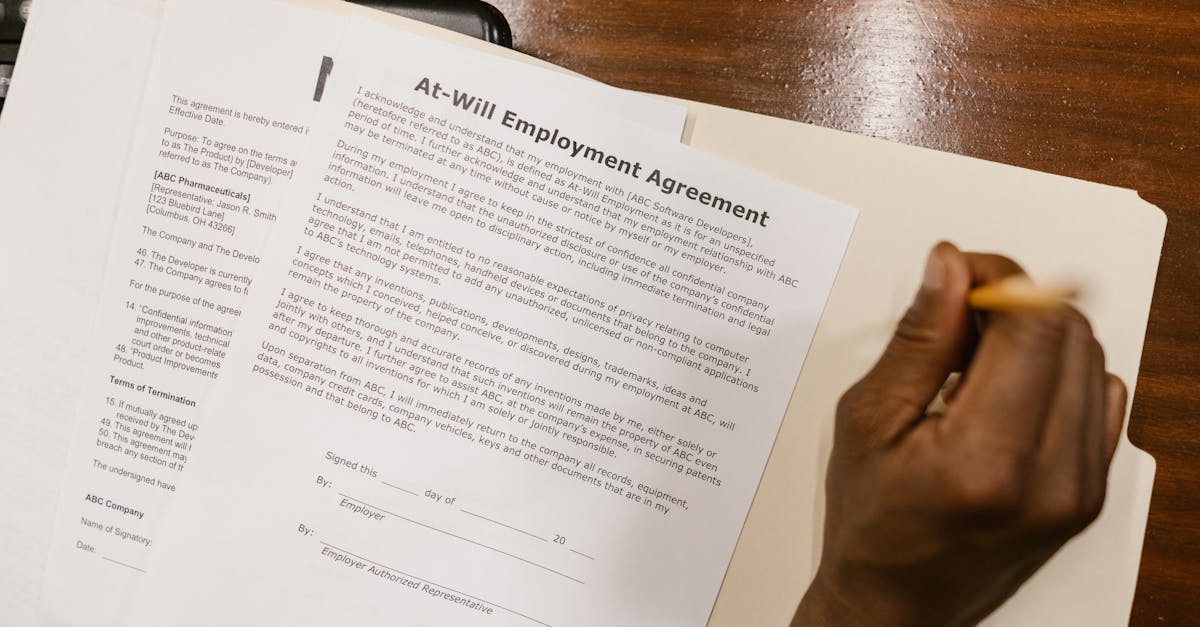
Introduction
Hiring fast shouldn’t mean sacrificing legal rigor. Small drafting gaps — inconsistent notice periods, unclear IP ownership, missing data‑breach duties or vague remote‑work rules — create outsized risk for HR, legal and the business. Document automation paired with AI verification can do more than save time: auto‑insert role‑ and location‑specific clauses, flag conflicting language, detect missing protective terms and surface concise risk scores so teams triage quickly. This AI‑verified checklist walks HR through the high‑impact clauses to include in 2025 (probation, IP, data privacy, remote work), provides modular clause snippets and automation rules, and outlines review workflows and KPIs to reduce exceptions and post‑hire disputes — all so you can standardize offers and employee agreements without slowing hiring.
Top high‑impact clauses to include this year (probation, IP, data privacy, remote work)
Probation: Define length, performance metrics, notice period and any reduced entitlements during probation. Make the right-to-terminate and review triggers explicit so managers and HR apply a consistent standard across employee agreements.
Intellectual property (IP) & inventions: Include an irrevocable assignment for work product and a clear definition of ‘work for hire’ and ‘pre-existing IP’. For contractors, point them to an independent contractor agreement that has tailored IP language.
Data privacy and security: Spell out duties around customer data, personal data handling, encryption and breach reporting timelines. This is increasingly important for both compliance and for employee contracts that touch regulated data.
Remote & hybrid work: Address primary work location, equipment, expense reimbursement, time-zone expectations, and cyber hygiene. Add a clause that reserves the employer’s right to change working location or require in-office days with appropriate notice.
Other high‑impact items
- Confidentiality / NDA — link to a reusable confidentiality agreement employee snippet.
- Non-compete / restraints — narrowly tailored, role‑ and jurisdiction‑specific.
- Termination & garden leave — notice, cause, and pay in lieu.
- Severance — conditional release language; see a sample severance agreement.
How AI can verify clause consistency, detect missing protective language and flag risk
Automated clause consistency checks: AI models can compare clauses across the template library and a proposed employment agreement to find wording conflicts (e.g., two different notice periods, conflicting IP assignments).
Missing protective language detection: Use rule-based and ML approaches to flag absent or weak protections — for example, missing confidentiality, an unenforceable non-compete, or no data breach notification clause.
Risk scoring & explanations: For each flagged item the system should provide a concise risk score and human-readable rationale (legal risk, operational impact, enforceability concerns) so HR and legal can triage faster.
Continuous learning: Feed outcomes — approvals, redlines, disputes — back into the model so it improves identification of language that historically led to disputes or regulatory scrutiny.
Sample clause library: standard text snippets HR can reuse across roles
Provide modular, editable snippets so HR can assemble employee agreements quickly without drafting from scratch.
Essential snippets (short examples)
- Probation: “The Employee’s first 3 months are probationary. During this period, either party may terminate with one week’s notice.”
- IP Assignment: “Employee assigns to Employer all rights in inventions, works and developments made in the scope of employment.”
- Confidentiality: “Employee shall not disclose Confidential Information during and after employment. See NDA for full definition.”
- Non-compete (limited): “For 6 months post-termination, Employee will not solicit customers of the Employer in the same territory.”
- Remote work: “Primary workplace is remote. Employee will comply with employer security policies and maintain suitable workspace.”
Keep each snippet tagged by jurisdiction (e.g., AU, US states, EU) and by role-sensitivity (executive, technical, sales) so they can be combined into a compliant employment contract or employee contract quickly. See an employment agreement sample for assembly ideas.
Automation: auto‑insert clauses based on role, location and seniority rules
Rules engine: Define conditional logic that maps role, country/state, and seniority to required clauses. Example: executives → mandatory IP assignment + stricter non-compete; contractors → contractor IP + no employee benefits.
Location sensitivity: Auto-select statutory clauses for payroll, notice, superannuation/pension and termination based on country — important for employee agreements australia and other jurisdictions.
Seniority and risk profiles: Higher‑risk roles (R&D, sales with customer lists) should default to stronger confidentiality and limited non-compete language, while junior roles use standard protections.
Templates for startups: Offer an “employee agreements for startups” mode that prioritizes speed with a clear escalation path to legal for exceptions — helpful when hiring fast and iterating on offers.
Workflow: review, legal approval, and versioned publishing for template libraries
Structured review flow: Author → HR review → legal review → commercial sign-off. Use automated gating so agreements with high-risk clauses or executive-level non-competes require senior counsel approval before publishing.
Version control & audit trail: Maintain immutable versions with metadata (author, approver, effective date). This is critical for defending enforceability in disputes and for regulatory audits.
Controlled publishing: Publish approved templates to an HR portal with visible change notes. Allow drafting teams to pull the latest approved employee agreements template and track which version was used per hire.
Integration: Connect to ATS/HRIS so the selected employment contract gets attached to candidate records and onboarding checklists auto-populate (e.g., NDAs, tax forms).
KPIs and QA: tracking clause usage, exceptions and post‑hire disputes
Key KPIs to track
- Template adoption rate: Percent of hires using an approved template vs. custom contracts.
- Exception rate: Frequency of deviations or manual redlines by clause type (non-compete, severance, IP).
- Approval cycle time: Time from draft to legal sign-off.
- Post‑hire dispute frequency: Number of disputes or litigation linked to specific clauses.
Quality assurance: Run periodic audits to sample agreements, verify correct jurisdictional clauses, and ensure signatures and version metadata are present. Use NLP to identify clauses that are frequently edited after legal review and target them for rewrite.
Feedback loop: Log support tickets and dispute outcomes back into the clause library to adjust defaults or add clarifying language. This reduces future exceptions and improves enforceability.
Tracking these metrics will help you balance legal risk, hiring speed and the practical needs of the business while standardizing employee agreements and employment contracts across the organization.
Summary
Small drafting gaps create outsized risk, but focusing on a handful of high‑impact clauses—probation, IP assignment, data privacy, and remote‑work terms—lets HR and legal reduce disputes and enforceability problems while hiring quickly. Pairing a modular clause library, location‑aware automation rules and AI verification helps catch inconsistencies, flag missing protections, and surface concise risk scores so teams triage faster. Standardizing employee agreements with these tools keeps hiring fast without losing legal rigor; to see ready‑to‑use templates and automation workflows, visit https://formtify.app.
FAQs
What is an employee agreement?
An employee agreement is a written contract that sets out the core terms between an employer and a worker, such as duties, pay, hours and key protections like IP and confidentiality. It establishes expectations and can help prevent disputes by making obligations and notice periods clear.
Do I need an employee agreement?
While some jurisdictions require written terms, having a clear employee agreement is best practice even when not mandatory: it reduces ambiguity, protects company IP and data, and supports consistent treatment across hires. For growing teams, standardized templates also speed onboarding and reduce exceptions.
What should be included in an employee agreement?
Include high‑impact clauses such as probation length and notice, IP assignment and invention definitions, confidentiality and data‑breach duties, remote‑work expectations, and termination terms. Tailor those clauses by role, seniority and location to ensure enforceability.
Can an employer change an employee agreement?
An employer can change terms only with the employee’s agreement or where the contract expressly allows variation; unilateral changes risk breach claims or constructive dismissal allegations. Use clear variation clauses, provide appropriate notice, and escalate material changes through legal review to limit disputes.
How long is an employee agreement valid?
Duration depends on the contract type: fixed‑term agreements expire at the end date, while permanent contracts run until terminated by notice or cause. Some obligations—like confidentiality and non‑solicit covenants—can survive termination for a defined period, subject to jurisdictional limits.





